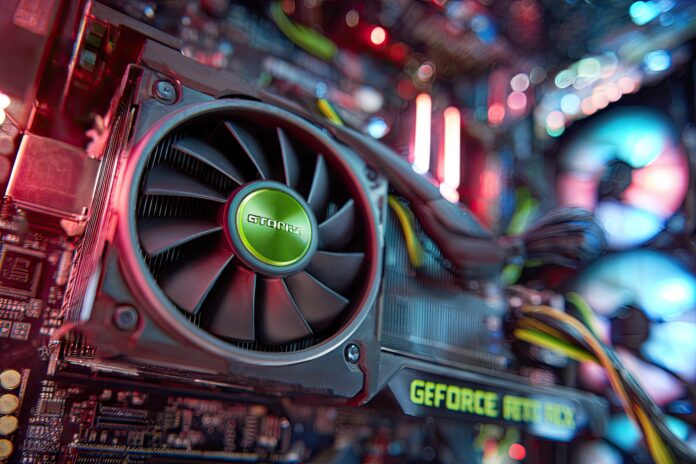The Unprecedented Rise of Nvidia in the GPU Arena
Nvidia GPU market share has reached an all-time high, capturing 92% of the discrete, add-in-board (AIB) graphics card segment in the first quarter of 2025. This marks a stunning leap from its previous 84% share in late 2024, leaving rivals AMD and Intel trailing far behind. This extraordinary ascent, reported by Jon Peddie Research, cements Nvidia’s dominance as the clear leader in graphics hardware for both gamers and professionals.[1][2][3]
What’s Driving Nvidia’s Success?
Most importantly, the launch of the GeForce RTX 50 series at the start of 2025 fueled Nvidia’s market surge. The new GPUs offered significant performance boosts and better energy efficiency, which captured the attention of both gamers and content creators. In contrast, AMD’s anticipated RDNA 4 lineup debuted later in the quarter and failed to make a similar impact.[4]
Besides that, Nvidia’s legacy models like the RTX 3060 and 4060 remain in high demand. According to Steam’s May 2025 hardware survey, these cards still dominate PC gaming rigs, showing Nvidia’s continuing relevance at multiple price points.[1]
AMD and Intel: Struggling to Keep Up
AMD, historically Nvidia’s primary competitor, saw its AIB market share tumble by 7.3 points to just 8% in Q1 2025. Intel, despite attempts to enter the discrete graphics space with its Battlemage B-series, now controls a negligible share, falling to 0%.[3] Therefore, Nvidia’s lead has grown wider than ever, effectively leaving both competitors on the margins.
A Market in Transition: Desktops Down, AI Demand Up
While Nvidia flourishes in discrete GPUs, the overall desktop CPU and GPU market has shrunk—desktop CPU shipments dropped 14.5% year-over-year. However, data center GPU shipments rose by 9.6%, reflecting robust demand for AI and high-performance computing. Nvidia’s prominent role in powering AI has further secured its revenue growth and market relevance.[1]
Key Factors Behind Nvidia’s 92% Market Share
- Innovative Product Launches: The RTX 50 series raised the bar for performance and efficiency.
- Brand Loyalty: Gamers continue to trust GeForce cards for reliability and cutting-edge features.
- AI Compute Leadership: Widespread adoption of Nvidia’s enterprise GPUs has boosted its profile beyond gaming.
- Effective Marketing: Nvidia’s strategic launches and partnerships enhance its competitive edge.
What Does the Future Hold?
Analysts expect the dedicated GPU market to face a -10.3% CAGR through 2028, with an installed base of 130 million units projected. However, by 2028, PC GPUs across all categories may reach 2.8 billion units, with dedicated GPUs comprising 15% of the total market. Therefore, Nvidia’s next challenge will be maintaining leadership as the market evolves and competitors regroup.[1]
Conclusion: Nvidia Sets the Pace for the GPU Industry
Nvidia’s achievement of a 92% GPU market share in Q1 2025 is nothing short of historic. Because of strategic product launches and relentless innovation, Nvidia has sprinted ahead of both AMD and Intel. The company now shapes the direction of gaming, high-performance computing, and AI infrastructure. The competition must rethink their approach to regain relevance in a landscape now overwhelmingly influenced by Nvidia’s vision and technology.
References:
- TradingView: Nvidia Secures 92% GPU Market Share in Q1 2025
- XDA: Nvidia Dominates the GPU Market Now More Than Ever
- TechPowerUp: Nvidia Grabs Market Share, AMD Loses Ground, and Intel Disappears
- TechnetBooks: Nvidia Desktop Graphics Card Market Share Soars to 92 Percent



